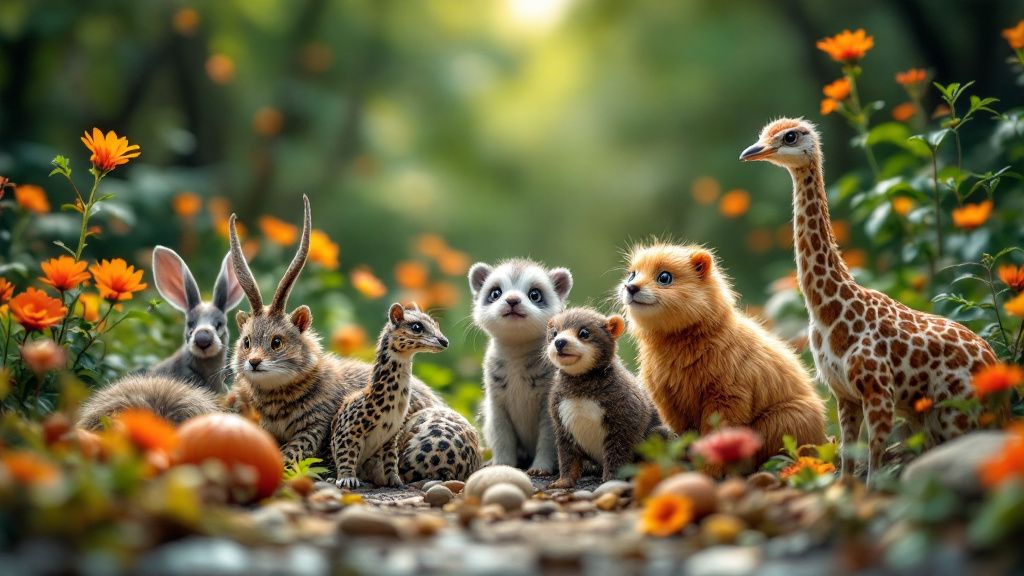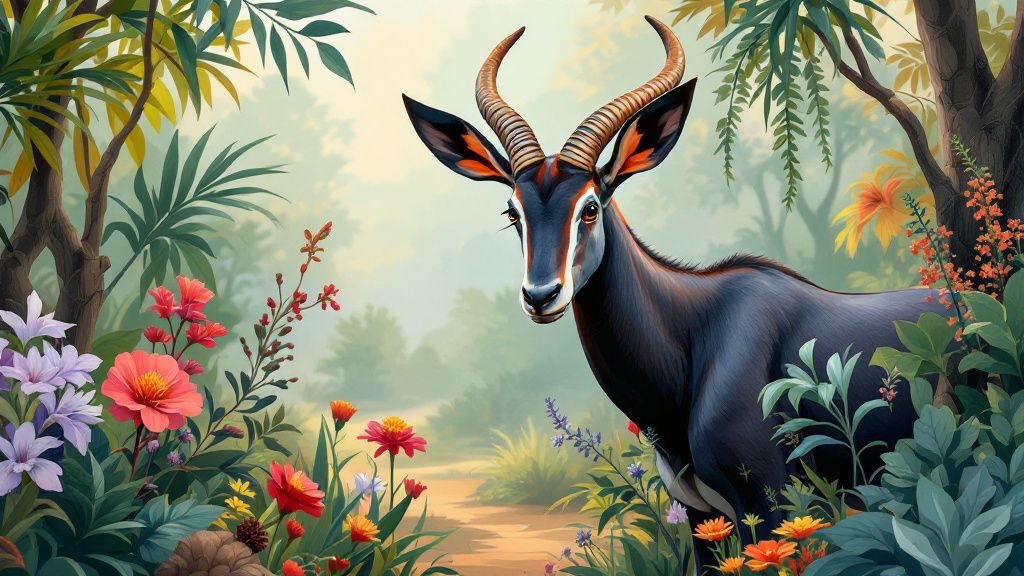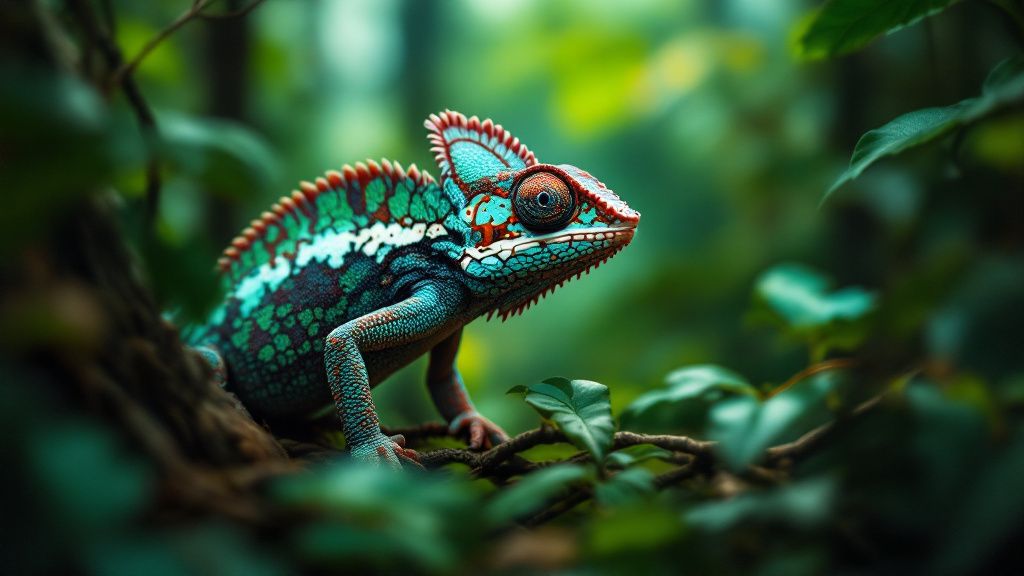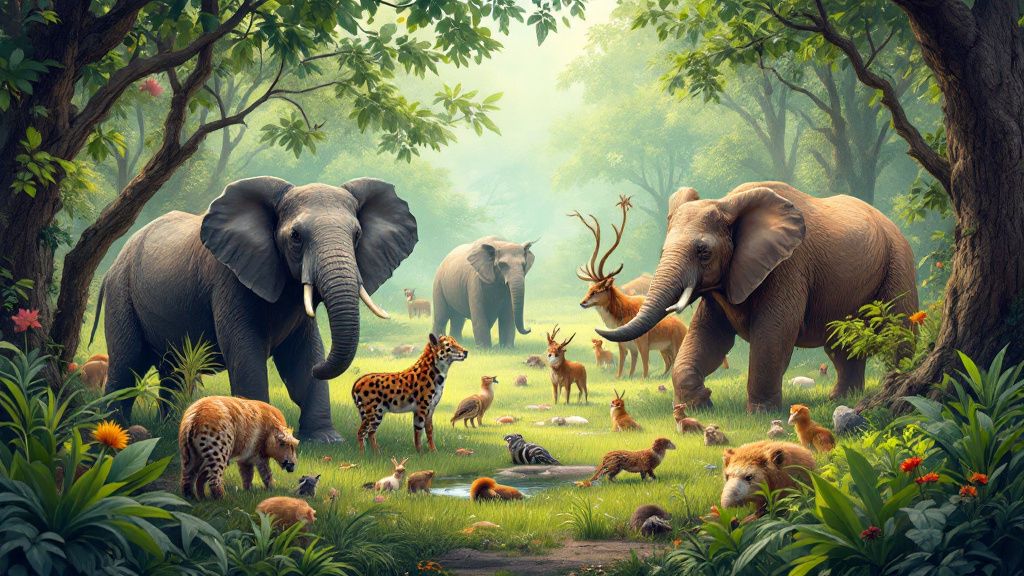
Discovering the world's unique creatures offers a fascinating glimpse into the diversity of life on Earth. The Kakapo, a flightless parrot from New Zealand, is a prime example of a critically endangered species, with only about 250 individuals remaining. This highlights the urgent need for animal conservation efforts to protect such unique wildlife. Similarly, the Okapi, a rare animal closely related to the giraffe, plays a crucial role in its ecosystem by aiding in seed dispersal and maintaining forest health.
In the marine world, the Mola Mola, or ocean sunfish, is a unique species that significantly influences ocean ecosystems. These strange animals contribute to food webs and nutrient cycling, showcasing their importance in maintaining ecological balance. On land, the Platypus serves as an indicator of environmental health, reflecting the quality of freshwater ecosystems.
The accelerating loss of biodiversity, with unique species disappearing at a rate 1,000 times faster than the natural extinction rate, underscores the need for immediate action. Protecting these weird animal species is not only vital for their survival but also for the health of our planet's ecosystems.

Across the globe, rare animals are hidden in diverse landscapes, each facing unique challenges. In Africa, the critically endangered African wild dog struggles with habitat loss and human-wildlife conflict, with only about 6,000 individuals remaining. Meanwhile, in China, the Yangtze Finless Porpoise, one of the rarest animals, faces threats from habitat degradation and pollution, with a population of approximately 1,000.
Australia is home to the Northern Hairy-nosed Wombat, with fewer than 250 individuals left. This species is critically endangered due to habitat destruction and competition with livestock. Similarly, the Kakapo in New Zealand is battling introduced predators and habitat loss, with only about 250 birds remaining.
In the Russian Far East and Northeast China, the Amur Leopard, one of the rarest big cats, faces poaching and habitat fragmentation, with an estimated population of around 100. The Vaquita, a small porpoise in the Gulf of California, Mexico, is critically endangered, with fewer than 30 individuals remaining due to illegal fishing practices.
The Sumatran Orangutan, found only in Sumatra, Indonesia, is critically endangered, with deforestation and palm oil plantations posing significant threats to its population of about 14,000. The Javan Rhino, with only about 76 individuals left, is the most endangered rhino species, facing habitat loss and poaching.
On Anegada Island in the British Virgin Islands, the Anegada Rock Iguana is critically endangered, with around 250 individuals threatened by habitat destruction and invasive species. Lastly, the Pygmy Three-Toed Sloth, native to Isla Escudo de Veraguas in Panama, is critically endangered, with fewer than 250 individuals at risk due to deforestation. These unique wildlife species highlight the urgent need for animal conservation efforts worldwide.

In the animal kingdom, incredible adaptations for survival are a testament to nature's ingenuity. The axolotl, a type of salamander, possesses the extraordinary ability to regenerate lost limbs, parts of its spinal cord, heart, and even sections of its brain. This unique animal adaptation has made it a focal point of biological research into regeneration and healing. Similarly, the mimic octopus showcases advanced behavioral adaptations by imitating the appearance and behaviors of other marine animals, such as lionfish and flatfish, to evade predators.
Some species of frogs, like the wood frog, exhibit remarkable physiological adaptations by surviving being frozen during winter months. They enter a state of suspended animation, only to thaw out in spring. The tardigrade, or water bear, can endure extreme conditions, including high radiation, extreme temperatures, and even the vacuum of space, thanks to its ability to enter a cryptobiotic state.
The Pistol shrimp demonstrates a unique adaptation in hunting and defense by creating a cavitation bubble that produces a sound reaching 218 decibels, capable of stunning prey and deterring predators. Meanwhile, the Arctic fox's thick fur coat changes color with the seasons, providing essential camouflage for hunting and avoiding predators.
Certain species of fish, like the cleaner wrasse, have developed mutualistic relationships with larger fish, offering cleaning services in exchange for protection and food. This highlights social adaptations that benefit both parties. The bombardier beetle's defense mechanism allows it to eject a hot chemical spray from its abdomen to deter predators, showcasing a fascinating evolutionary adaptation.
The African elephant's large ears are a physical adaptation that helps regulate body temperature, enabling it to thrive in hot climates. Lastly, the chameleon's ability to change color serves not only as camouflage but also as a means of communication and temperature regulation, illustrating complex behavioral adaptations. These unique animal facts highlight the diverse strategies animals use to survive and thrive in their environments.

Human influence on animal diversity is both profound and multifaceted, impacting ecosystems worldwide. The growing human population, projected to exceed 10 billion by 2050, significantly increases pressure on wildlife and their habitats. This surge in population contributes to urbanization and industrial expansion, leading to long-term habitat loss and fragmentation, which are major threats to unique wildlife.
The relationship between human activities and wildlife is complex. Industrial activities have caused significant long-term problems for animal populations, resulting in habitat destruction and increased competition for resources. However, these impacts are not irreversible. Conservation strategies and sustainable practices can mitigate these effects, offering hope for endangered species and animal conservation efforts.
Domestication is another way humans influence species diversity. For instance, China has the highest number of domesticated livestock breeds, with 709 breeds, reflecting human impact on species diversity through domestication. This aspect of human influence highlights the dual role humans play in both driving speciation and contributing to extinction.
By understanding and addressing these impacts, we can work towards a future where human activities coexist with the natural world, preserving the rich tapestry of life that includes rare animals and strange animals alike.

Creating sanctuaries for conservation is a vital strategy in protecting endangered species and preserving biodiversity. Community-based conservation initiatives have proven effective by involving local populations, fostering a sense of ownership and responsibility towards wildlife. This approach is complemented by the establishment of protected areas, which cover over 15% of the world's terrestrial and inland water areas as of 2020, providing safe havens for unique wildlife.
Captive breeding and reintroduction programs have successfully increased populations of endangered species like the California condor and the Arabian oryx, demonstrating the potential of these strategies in animal conservation. Habitat conservation, including the restoration of degraded habitats and creation of wildlife corridors, is essential for maintaining healthy ecosystems and facilitating animal movement.
Public education and awareness campaigns play a critical role in conservation success, informing communities about the importance of biodiversity and the role of each species in the ecosystem. Sustainable land-use practices, such as agroforestry and organic farming, help mitigate the impact of agriculture on wildlife habitats, promoting coexistence between human activities and wildlife.
The global amphibian decline has prompted specific conservation strategies, including habitat protection and the establishment of amphibian conservation programs. Innovative waste management practices are also being integrated into conservation strategies to reduce pollution and its impact on wildlife. The use of technology, such as drones and camera traps, has enhanced wildlife monitoring, allowing for better tracking of animal populations and assessment of conservation strategies.
A recent study highlighted that scaling up conservation interventions could significantly reverse biodiversity loss, emphasizing the need for increased funding and global cooperation. These efforts are crucial in ensuring the survival of endangered species and the preservation of our planet's unique animal adaptations and diverse ecosystems.
Get free resources, early access to new features and updates.
No spam. Just fun educational emails!